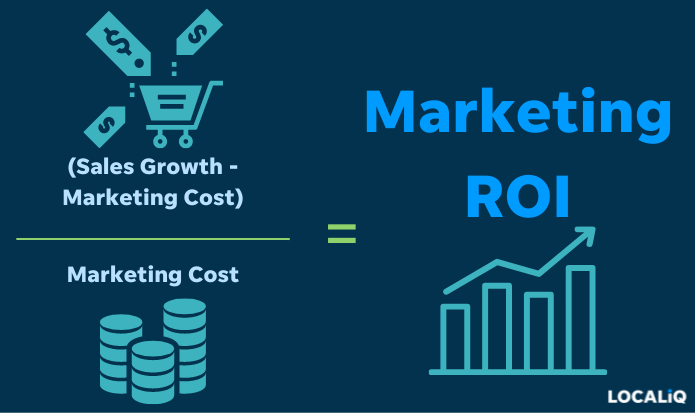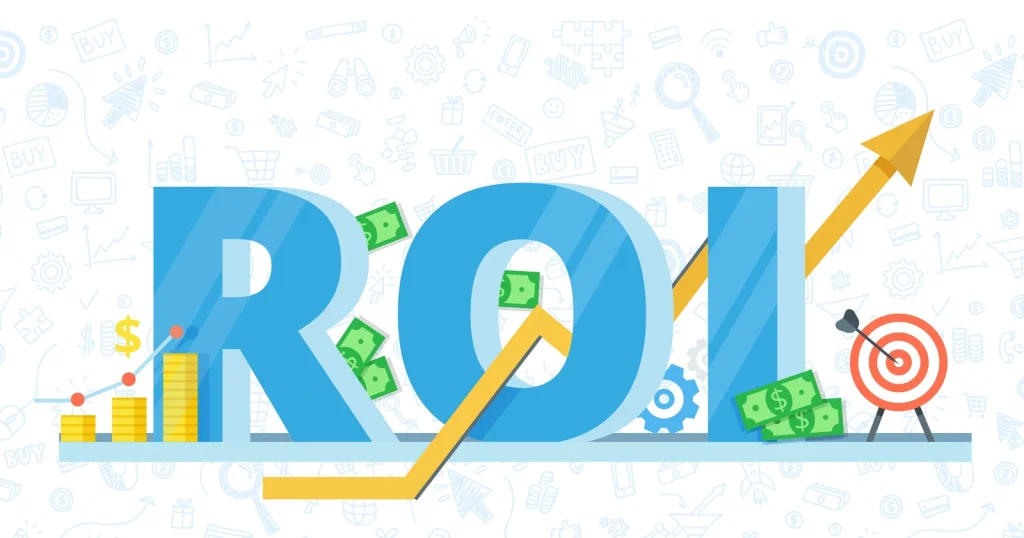What is marketing Return of investment? It’s the return on investment (ROI) that marketing quantifies to justify how marketing programs and campaigns generate revenue for the business.
Return of investment is short for return on investment. And in this case, it is measuring the money your company spends on marketing campaigns against the revenue those campaigns generate.

Why is [ROI] payback important?
Before starting any new campaign it’s important to understand your numbers. They might be estimates at first, but even having benchmarks can help you set a target to measure your campaign’s success. up-to-date marketing is not any more a straightforward affair of “attracting visitors.” It’s a complicated operation with comprehensive tactics across web and conventional platforms.
familiarize resolutions about where to occupy your period of time and forecast, you want to know every strategic outlay. Once you appreciate your marketing expenditure, you can make the right choice to produce realtors that make your line of work more commercial.
There are several types of marketing ROI:
- Revenue/bookings
- Cost per acquisition (CPA) ratio
- Sales cycle days
- Engagement duration
- Customer economic value
It’s vital to know the dissimilarity between every category. For example, income/reservation are steady in either net sales or appointments. CPA, on the other hand, is measured in either sales or marketing leads. Regardless of the ROI you choose to track, most of them are calculated in the same way.
Ways to calculate marketing rate of return
Using cost ratio to determine Return of investment
Alternatively, you can track marketing ROI by looking at the cost ratio, or efficiency ratio. This formula calculates how much money is generated for every marketing dollar spent.
The cost ratio = revenue generated: marketing dollars spent
An efficient marketing campaign may result in a cost ratio of 5:1—that is, $5 generated for every $1 spent, with a simple marketing ROI of 400%. An excellent campaign might see a cost ratio of $10 generated for every dollar spent (10:1) with a simple marketing ROI of 900%.
NOTE: Simple ROI = (sales – marketing cost)/marketing cost
Using direct and indirect revenue attribution

Most marketers measure the marketing ROI of programs via either direct or indirect revenue attribution. With direct attribution, all of the revenue from a sale is attributed to only one marketing touch. In the example above, most marketers would credit the last touch before the prospect buys. With indirect attribution, the revenue from the sale is apportioned evenly across all touches.
Marketers should stop choosing direct over indirect attribution and instead use both. In this model, marketers can compare the programs that were most effective at getting prospects to buy with those that were influential across multiple sales. That way marketing ROI becomes a key component of an enterprise revenue performance management strategy.
Are your marketing investments paying off?
Bidding for keywords. Commissioning content. Sponsoring events. Putting logos on NASCAR vehicles. Marketers make hundreds of buying decisions as they seek to achieve their objectives. But how can you make sure your speculations are actually liquidated? And how can you make constant improvement in your financing? If you want to understand how your buying decisions affect your organization’s overall growth and revenue objectives, focus on calculating your marketing ROI.
The challenges of calculating marketing [ROI]
Calculating marketing ROI seems like it should be easy—especially when you consider that today’s marketers have access to powerful reporting and tracking tools through web analytics, customer relationship management (CRM) systems, and cross-channel marketing analysis. Marketers can use these tools to track the money they spend on marketing programs that
Marketing Channel return of investment
Measuring marketing ROI means calculating marketing performance on each and every channel. Here’s a primer on how to measure MROI on key digital marketing channels.
Email Marketing earning yeild
Email has a well-deserved reputation as a high-ROI marketing channel. In fact, email has an average ROI of 3,800%, which makes it just about the best marketing investment your company can make. This makes it an essential channel for almost any business, and an especially important channel for SMBs.

Email marketing ROI is also fairly easy to measure. By tracking open rates and link clicks, and following your readers’ journeys across your website, you’ll quickly get a clear picture of what works best for your email marketing strategy.
Here’s an example of calculating email MROI:
A local grocery store sends a weekly email to its customers. One of its partners, a local cupcake shop, pays the store to place an ad in its email.
Through the tracking URL in the email ad, the cupcake shop can see how many visitors visited its website, and how many ordered cupcakes.
If the profit the cupcake shop received from these visitors was more than the shop spent on the email ad, it may want to keep advertising with the grocery store — or even reach out to other grocery stores to run similar ads.
Start Measuring Your Marketing ROI
Accurately measuring marketing ROI is key to improving your marketing strategies, no matter your industry or whether you’re an SMB or enterprise business. When you use marketing technology to power your MROI analysis, you’ll have the data you need to create messaging that connects with customers on all their preferred channels.
That’s why clear marketing ROI is the key to short-term wins and long-term customer relationships alike. To cut through the clutter and start measuring your MROI clearly, try out
Social Media investment performance
Social media can be a very high-ROI channel for many businesses — but remember, it’s not all about hard numbers. While social media can help you generate leads, gain followers, and garner website traffic, it’s also about brand awareness and cultural impact.
Tracking key social media metrics such as likes, followers, and page views is essential because it helps you understand whether your messaging is hitting the mark or not, allowing you to quickly pivot your strategy. This is crucial for SMBs, as it shows whether it’s better to keep things organic or invest in paid social media.
Here’s an example of calculating paid social media MROI:
A fashion magazine is trying to attract more subscribers, so it starts offering a free trial. All of its social media posts promoting the trial include a tracking URL.
The magazine pays to boost its posts on social media for a week. In that time, it receives many new visitors, a percentage of whom sign up for the free trial. After the trial, a smaller percentage become paid subscribers.
The final number of paid subscribers would show the fashion magazine whether it was worth paying to promote its posts on social media. By going back and tracking where those subscribers came from, it would also show which social media channels led to the most valuable new leads.
Digital Advertising ROI[financial gain]
There are many different types of digital advertising, and measuring the MROI of all of them can give you a clear picture of the value of your marketing spend, and help you focus on the right channels. Email and social media are two of the most important digital advertising channels, but display, native, search, and video are an essential part of almost any marketing strategy as well.
Here’s an example of calculating digital video advertising MROI:
A local theme park makes a short video promoting its new electronic ticketing system, which is tied to a mobile app. The video is shared on a variety of digital advertising channels — including social media, display, and natively on the park’s website — and it includes a tracking link that leads to a vacation-booking page.
After the video ad stops running, the park can calculate digital advertising MROI by weighing the number of new vacations booked against the cost of producing the video and sharing it across its chosen digital channels.
Event Marketing ROI
Live events are an important part of B2B lead generation, but they’re often a big marketing expense. As such, it’s essential to clearly measure your MROI. When it comes to events, everything from advertising the event to paying presenters and vendors is part of your marketing spend, but the connections you can make with new customers are often well worth the cost.
Here’s an example of calculating MROI for an event:
A small architecture firm holds an event to publicise its designs for office buildings and spends a fixed sum on inviting local business leaders and promoting the event through email, social media, and web campaigns. Other marketing expenses include renting the venue and paying food vendors.
At the event, attendees are encouraged to sign up for the firm’s email list, follow the firm on social media, and most importantly, start working with the firm to design a new office building. After the event, the firm measures the number of email leads generated, new social media followers gained, and new contracts initiated. If the value of these is greater than the value of the collected marketing expenses, the firm has generated positive MROI from their event.

